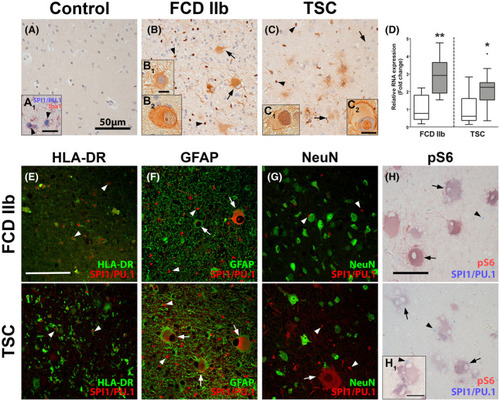FIGURE 2
- ID
- ZDB-FIG-210906-2
- Publication
- Zimmer et al., 2021 - Upregulation of the pathogenic transcription factor SPI1/PU.1 in tuberous sclerosis complex and focal cortical dysplasia by oxidative stress
- Other Figures
- All Figure Page
- Back to All Figure Page
|
SPI1/PU.1 is highly expressed in malformed cells in TSC and FCD 2b lesions. Autopsy control cortex showed SPI1/PU.1 expression solely in microglia (A, A1). In TSC and FCD 2b expression of SPI1/PU.1 was found in microglia (arrowheads) but also malformed cells and dysmorphic neurons (arrows) (B, B1, C). Moreover, SPI1/PU.1 expression could also be found in the nuclei of malformed cells (B2, C1, C2). Analysis of RNA expression in tissue from resected TSC tuber and FCD 2b lesion of an independent cohort showed higher expression of |

